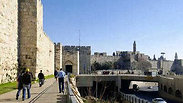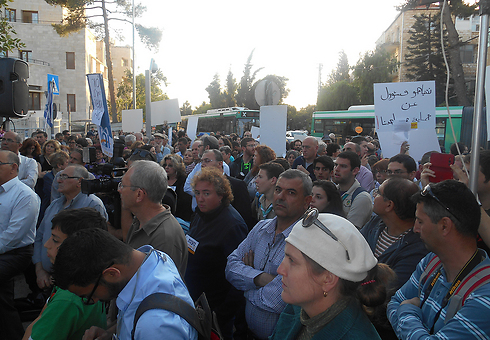
The gates of Jerusalem's Old City
צילום: משה מילנר, לע"מ
Jerusalem's negative population growth continues
The capital's population decreased by 7,851 inhabitants last year, continuing a multi-year trend; most of those leaving are young, secular families.
Jerusalem once again experienced the country's highest rate of negative population growth. According to the annual Central Bureau of Statistics report, last year Jerusalem lost 7,851 inhabitants: 10,351 people moved to the city, but 17,091 people left it.
The capital has been experiencing negative population growth for several years. Most of those leaving the city are young religiously non-observant families.
The main reasons they cite for leaving are the poor quality of life and of municipal services and the high cost of housing. Other factors are the relative scarcity of high added-value jobs, which means low salaries. Even in hi-tech, companies in Jerusalem tend to pay less than in the greater Tel Aviv area. In addition, its being one of the few cities in Israel where the secular population is a relatively disempowered minority consequently renders it less attractive to such families.
Jerusalem is one of the country's poorest cities. The country's lowest earning demographic groups with the highest poverty rates, Arabs and ultra-Orthodox Jews, account for almost two thirds of the population. As a result, many families are exempt from paying municipal taxes, and a relatively higher number of families require social welfare services.
It is not just the secular who are leaving the city. Orthodox and ultra-Orthodox families are also contributing to the negative population growth, primarily due to high housing prices. The shortage of housing is exacerbated by the fact that Jerusalem has a high rate of foreign ownership of apartments. Many foreign Jews own apartments in the city, which they tend to use only twice a year: around the High Holy Days Passover. The rest of the year, most of these residences remain empty.
The most popular destinations for secular families who want to stay relatively close to the city are Mevasseret Zion and Modi'in. The popular destinations for Orthodox and ultra-Orthodox families are Beitar Ilit, Beit Shemesh, and settlements in the West Bank.
Ashdod and Haifa also experienced negative growth, but only at a rate of about 2,000 each. Most of the cities with the highest growth rates are in center of country, such as Hod Hasharon, Petah Tikva, Rehovot, Yavne, and Kfar Saba.
Article reprinted with permission from TPS













